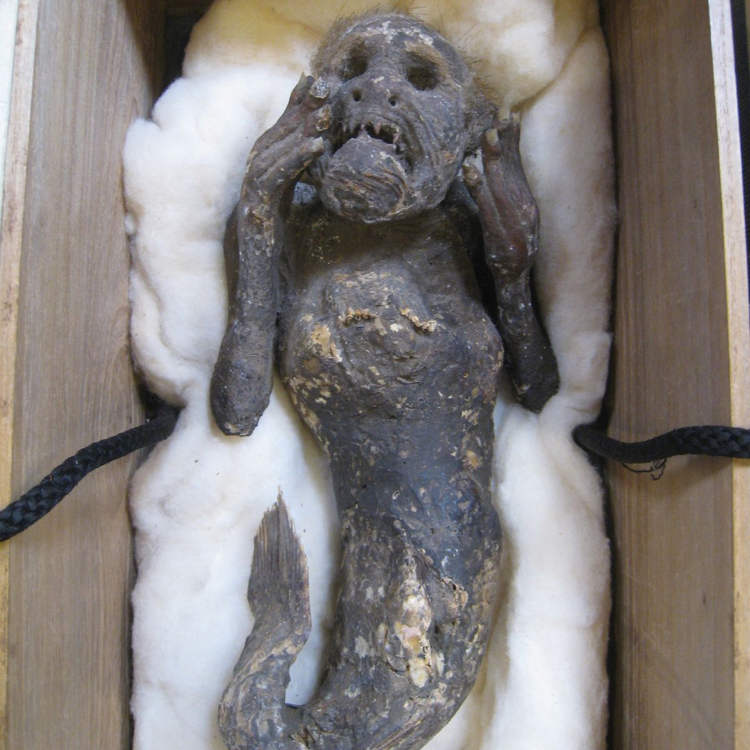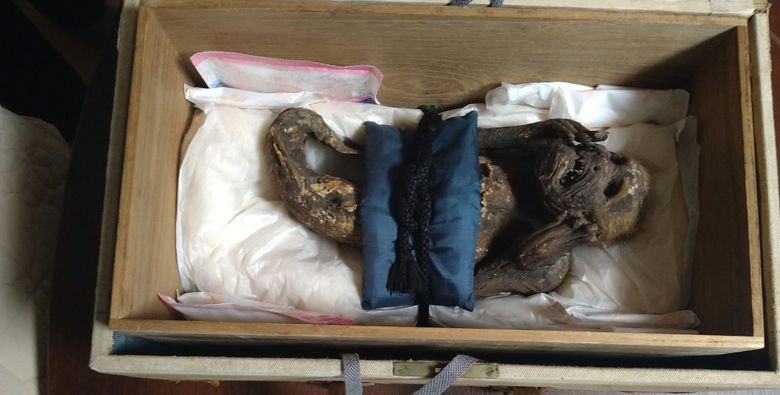|
The Lingcod, a fish native to the North American west coast, usually has
brown-red or even greyish skin and white flesh, but about 1 in 5
specimens are actually neon blue both inside and out, and no one really
knows why.
Popular both among recreational fishermen and seafood lovers for its
delicious meat, the lingcod is a bottom-dwelling fish that can grow up
to a size of 152 centimeters. It’s a voracious predator that feeds on
virtually anything that moves and fits into its large mouth and has only
a couple of species of seals and human fishermen to worry about. The
Lingcod is sometimes referred to as ‘smurf cod’ due to the fact that
about 20 percent of specimens have neon blue flesh that looks either
alien or affected by nuclear radiation. Interestingly, while scientists
have theories about this bizarre coloration, we have yet to establish
why some lingcod have blue flesh.
|
|
 |
|
In 2016, while on a spearfishing trip, marine ecologist Aaron Galloway
encountered his first blue lingcod. After inspecting the fish, he
noticed that it was blue both inside and out, but when trying to
discover more about it, he discovered that there wasn’t much information
available. While neon blue lingcod had been spotted before, no one had
done any serious research on the subject.
We know that the blue color of some lingcod is the result of a bile
pigment called biliverdin, but how it actually colors the flesh of fish,
why it only affects some lingcod, or even where it comes from are still
puzzles that need solving. Galloway tried to do just that in 2016, when
he stumbled over a catch survey involving more than 2,000 lingcod caught
along the US coastline.
|
|
 |
|
“Basically, we looked at what factors correlate with blueness,” the
marine ecologist told The Toronto Star. “There hadn’t been any
systematic studies about this.”
Analyzing the data, the researchers were able to show that the
probability of blue flesh was highest in females, particularly those
caught in shallow waters and that were smaller in size. The incidence of
blue lingcod ranged from 4 to 25 percent, depending on the region.
However, none of these findings really answered the big questions.
|
 |
|
Although sex was still the biggest predictor of flesh blueness, as 80
percent of all the blue ling cod were female, it wasn’t the only factor,
as 20 percent of blue lingcod were male. The fact that most blue fish
were caught in shallow water suggests that the color could provide
better UV protection, while some believe that the biliverdin comes from
specific food sources. At this point, we just need more scientific
research to determine why some fish turn out blue.
“Our hypothesis, and some of the fatty acids we traced, indicate the
blue fish might be starving, or going through some sort of nutritional
stress,” Galloway said, adding that laboratory tests are needed to
determine whether lingcod coloration is determined by stress and whether
lingcod can change color depending on various factors.
In case you’re wondering if people actually eat blue lingcod, the answer
is yes, and most of them probably don’t even know it, as the cooking
process causes the flesh to go from neon blue to its usual white.
Despite what you may read on various angling forums, blue lingcod meat
is perfectly edible and quite delicious.
|